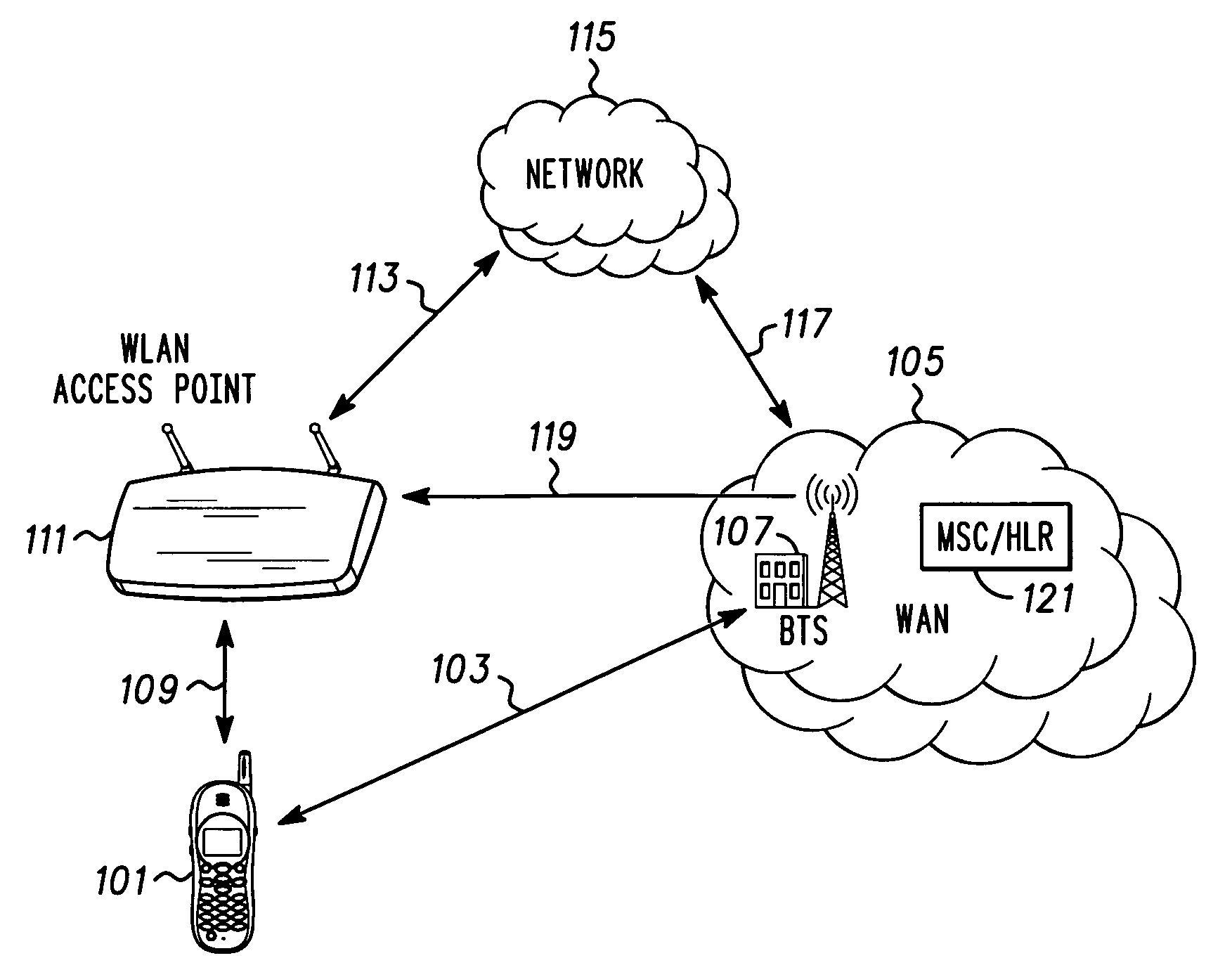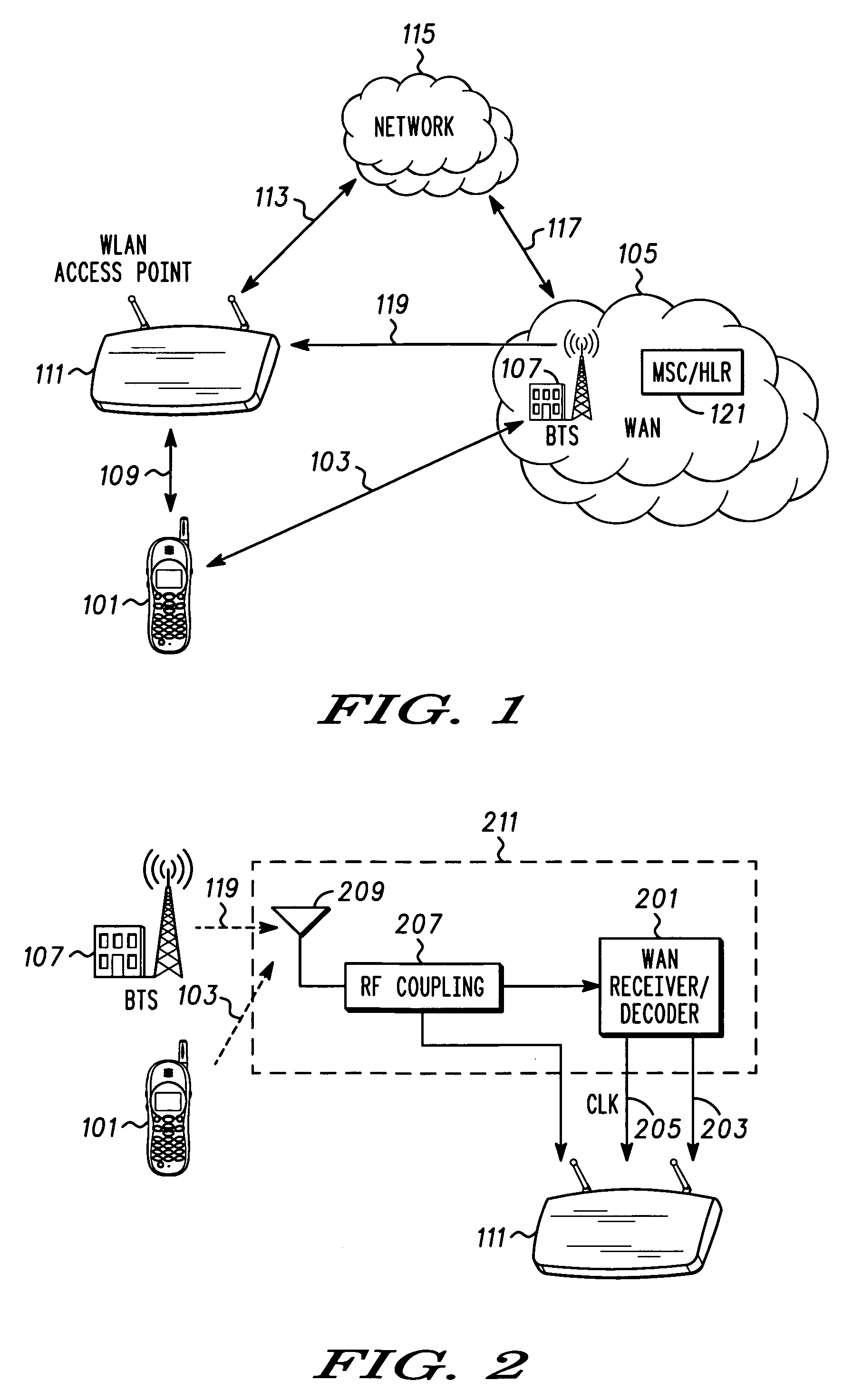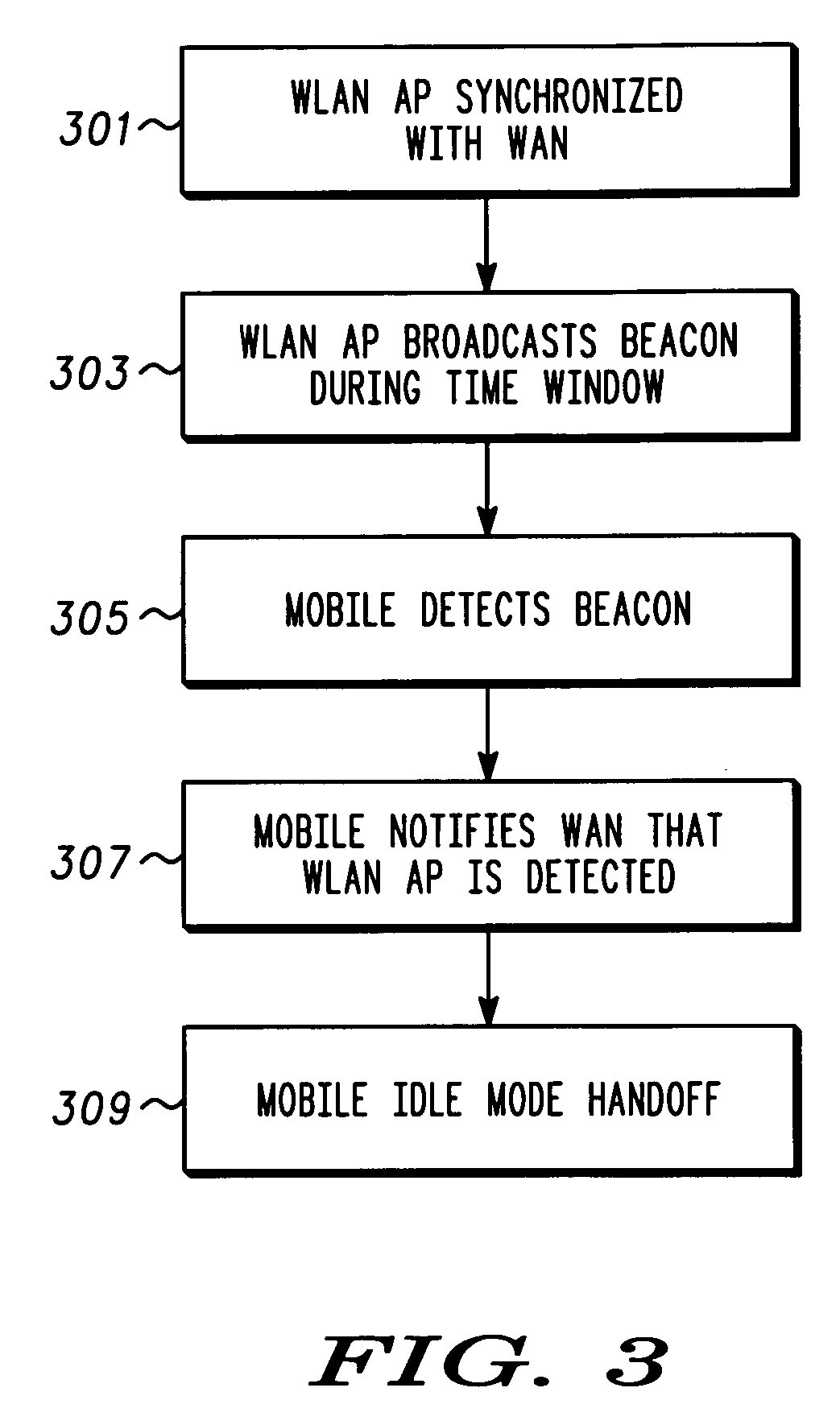Mechanism for hand off using subscriber detection of synchronized access point beacon transmissions
a subscriber detection and beacon technology, applied in the field of cellular and wireless local area networks, can solve the problems of battery power and therefore limited operating time, limited throughput of wan network, and inability to coordinate cellular and wlan power saving mechanisms for dual-mode or multi-mod
- Summary
- Abstract
- Description
- Claims
- Application Information
AI Technical Summary
Benefits of technology
Problems solved by technology
Method used
Image
Examples
first embodiment
[0020] In accordance with the present invention, a WLAN access point is synchronized with a wide area network (WAN) via either a backhaul connection, or via hardware of the WLAN access point suitable for receiving and decoding a synchronization timing signal from the WAN.
[0021] The WLAN access point may then transmit a beacon signal during a defined time window. The mobile station is aware of the time window and only powers its WLAN transceiver circuitry on during the appropriate window. Because the WLAN access point is synchronized to the WAN, the mobile station is able to anticipate the appropriate time window for power up. When the mobile station detects the WLAN access point beacon, it notifies the WAN, via a WAN base transceiver station (BTS) and proceeds to hand over idle mode signaling from the serving BTS to the WLAN access point.
second embodiment
[0022] In accordance with the present invention, the mobile station transmits a WLAN beacon during the predetermined time window. A WLAN access point, operating with synchronization information and knowledgeable of the predetermined time window, detects the mobile station beacon and will then communicate with the cellular network infrastructure via a backhaul connection, to inform the cellular network that a mobile station has been detected.
[0023] The cellular network then sends a message to the mobile station to cause it to power up its WLAN transceiver and search for a WLAN. Upon successful detection and connection to the WLAN, the mobile station hands over from the cellular network to the WLAN. Further, the mobile station may use the access point beacon information to update a neighbor list or WLAN scan report, or equivalent and to disconnect from the cellular network and continue idle mode activity using the WLAN access point. For example, the mobile station may subsequently mai...
PUM
 Login to View More
Login to View More Abstract
Description
Claims
Application Information
 Login to View More
Login to View More - R&D
- Intellectual Property
- Life Sciences
- Materials
- Tech Scout
- Unparalleled Data Quality
- Higher Quality Content
- 60% Fewer Hallucinations
Browse by: Latest US Patents, China's latest patents, Technical Efficacy Thesaurus, Application Domain, Technology Topic, Popular Technical Reports.
© 2025 PatSnap. All rights reserved.Legal|Privacy policy|Modern Slavery Act Transparency Statement|Sitemap|About US| Contact US: help@patsnap.com



